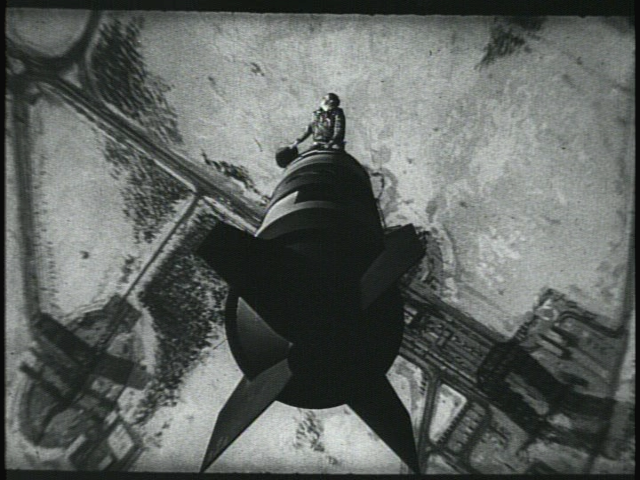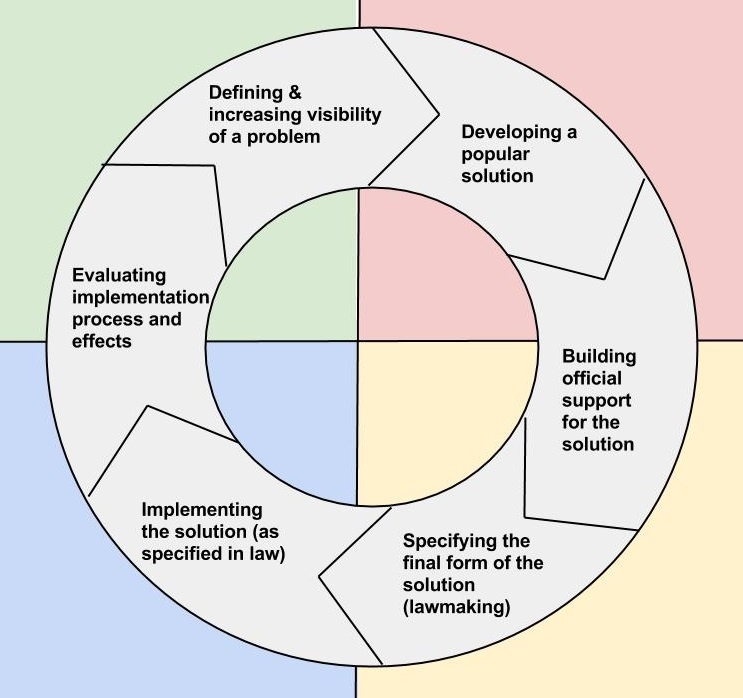Dr. Policy or: How I learned to stop worrying and love politics

These months of presidential campaigning have been emotionally exhausting already, and we’ve barely begun to get into it. Set against a landscape of terrible violence at home and abroad, the nation’s political battle feels apocalyptic, like the real-life final set-piece in a huge, over-budget summer movie. My Facebook feed is a river of horrors punctuated by kitten videos. And, yet, every piece of media I encounter assures me that this is not the end, and that we are on the brink of still deeper disaster.
Under these circumstances, maybe it’s pointless to bother thinking about the future, but the sun still comes up and the earth still seems to be turning so I guess I’ll do the human thing and think about the future anyway. In particular, I’ll think about what comes after elections: the making and implementing of policy.
Actually, though we’re not thinking much about it right now, policymaking and the administration of those policies is the constant work of government, going on before, after and during, the high octane of election campaigns. It’s the process of building “the system” that defines what’s legal and what’s illegal, what’s criminal and what’s merely unfortunate, in all of the political jurisdictions across the country. It includes much more than making official written decisions. It includes the enforcement – or non-enforcement – of law. It includes the diligent – or shoddy – implementation of government services. It includes the official – or de facto – limits on people’s behavior in schools, in bathrooms, in hospitals, on the street.
While the election of lawmakers (including executives) is definitely important, the process of making and administering policy has a number of different stages and points of competition that truly make every day, not just Election Day, an opportunity to change “the system.”
So how do we do it? You can get involved in affecting outcomes all along the policy cycle.
No matter what size the government you’re working with, the democratic policymaking process follows the same basic structure. People who teach political science, public administration or public policy call it the policy cycle, and represent it as a circle, because making and implementing policy tends to be an ongoing and iterative process. A problem might help lead to the adoption of one kind of policy, but then the implementation of that policy creates new problems, and then observations of those problems leads to the creation of further policy.
There are a number of versions of the policy cycle out in circulation. I developed a version that uses language which is a little less tied to the assumption that policymaking occurs just within government. As open government advocates know, people outside government can – and do – play an important role in nearly all of the aspects of the policymaking and implementation process.

If this policy cycle is a decent representation of the process for making all public policies, you can use it to plan a variety of ways to attack the issue and change the policy areas that matter to you. For example:
1. Defining and increasing the salience of a problem
How do people raise public awareness of a problem? If you’ve ever written a letter to the editor, or posted an angry missive to your blog, you’ve probably already engaged in this stage of the policy process. When we speak clearly about the problems we observe in public life, we help to raise the importance of that issue for others, and this spurs public interest in solving the problem. The most effective way to do this is through the media. There are many ways to attract media attention to the problem you’ve identified, ranging from putting out a report or interesting website to holding a protest.
Media’s broad success at raising sense of an issue’s importance – called “agenda setting” in academic work –is one reason that media are an important part of the policy process. Media coverage communicates the problem both to potential allies, who could join you, and also to lawmakers, who gain a sense of how important an issue is to the public partly through its presence in the media. (This is also the reason why media partiality or partisanship is such a recurrent hot-button issue.)
2. Developing a popular solution
For the purpose of making policy change, coming up with solutions is just as important as highlighting problems. No matter how often a problem is raised, if nobody has any acceptable solutions to offer then that problem just won’t get addressed. There are often more people offering specific problems than specific solutions, so offering solutions can also be a valuable way to contribute a needed element to the process.
However, it’s a less common contribution because it’s usually trickier to develop an actionable and acceptable solution than it is to draw attention to a problem. For one thing, you need to know your problem’s legal and organizational context in order to make a concrete proposal for fixing it. Over time, activists and organizations who are interested in the same problem over time tend to gather this information, setting them up to generate solutions that will make sense to the people who need to pass them. “Until you’ve worked 5-10 years in government or advocacy,” argued GovTrack founder Josh Tauberer in a recent Medium post, “you can’t see what needs change.” You might not need five to ten years, but you do need to learn a good amount about the relevant institutions in order to know what to target.
3. Building official support
The process of developing a solution doesn’t necessarily mean that others will agree it’s a good idea. Therefore, building a level of collective agreement around a single policy approach is another aspect of the policy-making process. Some of the activities you might do to build official support include creating coalitions, lobbying, advertising, and, inevitably, having lots of meetings and phone calls. Using social networks well is an important part of building support for a policy. Activists develop network-based strategies for building support through conducting exercises like “power mapping.” Activists build official support both by asking official decision-makers directly, which is called lobbying, and by using grassroots approaches like asking a legislator’s constituents to contact their representative in support of a policy. Depending on the topic, broad public support may also be useful and require a public (or targeted) advertising strategy.
People who are good at building support for a policy approach are sometimes called “policy entrepreneurs,” but when they work chiefly with people and groups outside of government, they’re usually called “organizers.” Either way, they’re skilled at helping people identify and connect around a point of common political interest.
4. Specifying the final form of a solution
When support-building has been successful and a lawmaking body is at the point of seriously considering adopting a solution to a problem, you would think that process was nearly complete – but it really isn’t. The old phrase “there’s many a slip ‘twixt the cup and the lip” might very well have come from the many ways that an apparent policy success can be completely undone by bad legislative wording. Establishing the final, legal form of a policy solution is a vitally important part of the policy process. However, it’s also the most specialized, since it requires both good knowledge of the policy’s legal framework as well as an understanding of the legal meaning of the policy’s language.
While advocates outside of government can offer model language for a policy solution, they don’t have any control over what the lawmakers actually get to vote on. Lawmaking bodies have in-house lawyers who are ultimately in charge of drafting official policies. However, it’s vitally important that interested advocates keep a close eye on the language of those drafts and on the kinds of amendments that get offered during the process. Because the drafts and amendments can move from introduction to voting extremely quickly, people who care about this aspect of the policy process need to be able to pay very close attention to the proposed policy language throughout the period when it’s under consideration. This is time consuming, often frantic, and there’s usually a high cost for getting it wrong – which is why lobbying can be such well-compensated work. (Sadly, this is usually not the case for those us who do it on behalf of open government.)
5. Implementing the solution as it is specified in law
Once a law has passed, it is generally up to the government to ensure its implementation. However, for some types of service-focused organizations, this is the very best place for to engage and ensure that the policy functions correctly. Organizations can contract with government to provide the kinds of services they may identify a community as lacking. For people in the civic tech movement, for example, this may take the form of joining with government to create better and more public-facing technology solution than the government could make with its existing resources.
Once a person or organization decides to join in this stage of the policy process, they usually have to give up the possibility of being directly involved with any other part of it. Government employees have a limited ability to speak publicly about their work. Most of them are also prevented from interacting closely with the formal policymaking process through ethics laws. However, for many people working for government, this tradeoff seems to be worth the benefit of being able to do a good job implementing a policy that’s meaningful to them.
6. Evaluating the process and effects of implementation
Back on the outside of government, once policy implementation has begun, all the people and organizations who care about the effects of the policy can create change by serving as “public watchdogs.” Public watchdogs monitor the effectiveness and fidelity of public policy’s implementation. Anyone can perform this function, although journalists have done the bulk of the work in this area since the birth of “muckraking journalism” in the early 20th century.
When someone outside of government – whether a journalist, organization, or attentive individual – notes a problem with the implementation of a government policy, they have two main routes for getting the problem fixed. They can take an “inside” route, and raise the issue with the government officials who are in charge of implementing the policy, to see if the policy’s implementation can be improved without additional public process. Otherwise, they can take an “outside” route, which involves going (back) to step 1 in the policy cycle: raising larger awareness of a problem in order to help create a political solution. The choice of whether to go “inside” or “outside” creates an ongoing conversation about strategy for people who want to see a policy program altered but not entirely abandoned.
Either way, it is part of the process of making change in the everyday, routine function of government. It might be less exciting and public than elections, but it is the direct way to impact the kinds of problems that drive people to want to change the system.
It is the core strength of the democratic system that these functions of policymaking are regular and publicly observable. It is an unfortunate weakness of the system that more people don’t, or aren’t able, to involve themselves in it. Even if all of the predictions of disaster are correct and the world continues to fall apart, so long as the policy process holds we can all do something to try to put it together again. After all, if the only thing as certain as death is taxes, then bureaucracy is really a kind of superpower, isn’t it?
Make it your superpower.

